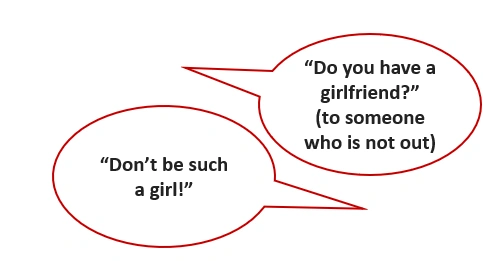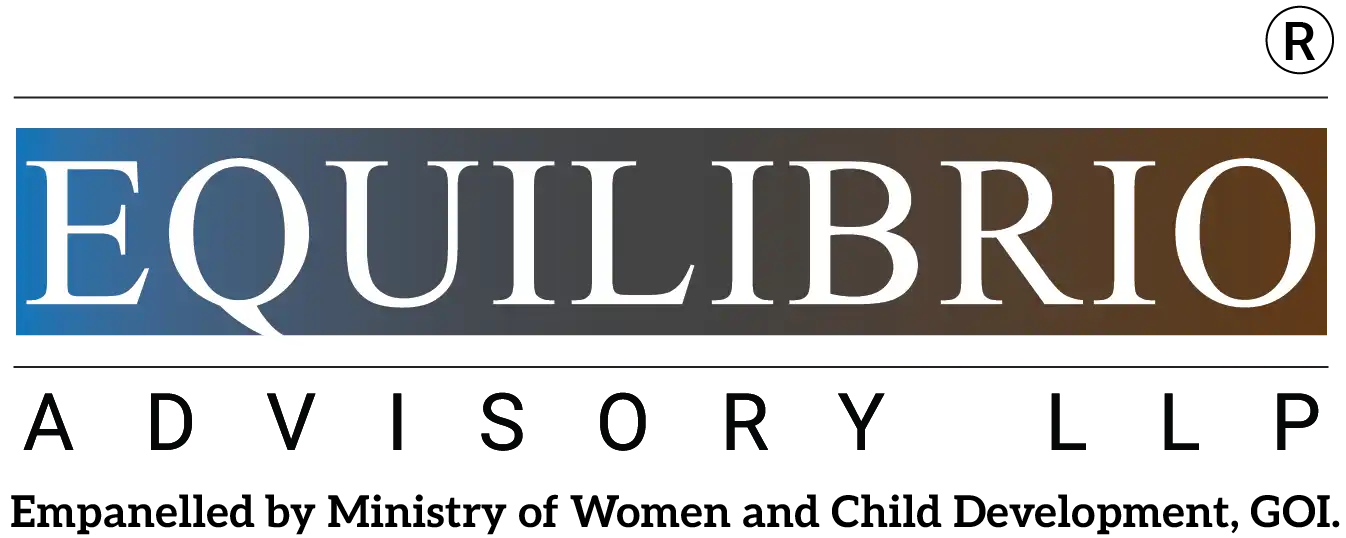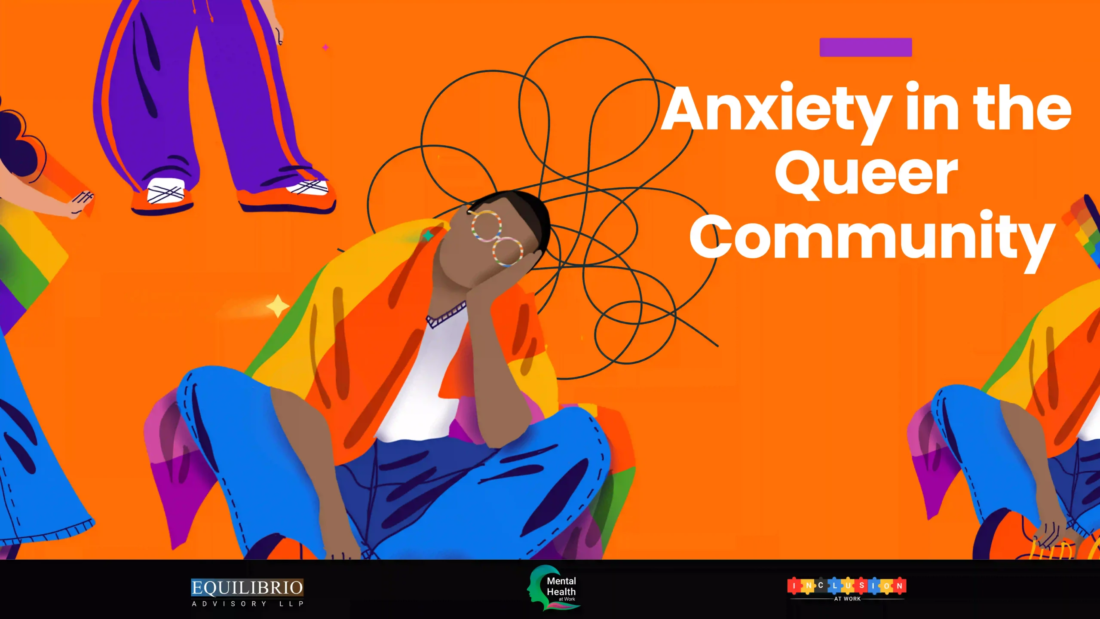Anxiety is an emotion that tends to show up when a person is looking forward to a certain event/outcomes or dreading it. It is a part of a state of anticipation– when there is uncertainty about the outcome of a situation, or if the situation/ outcome has deep meaning or value for the individual. Anxiety impacts both body and mind, affecting thought patterns, emotions, and behaviour; especially if experienced in a prolonged state.
Anxiety may manifest in similar ways for most people. But the reasons why anxiety colors one’s experience may vary. Furthermore, there are certain groups of individuals who experience an increased vulnerability towards anxiety – owing to social or other factors. Depending on the socio-economic situation, an individual may experience anxiety for longer than others, increasing the risk of adverse impact at a physical, social and emotional level. These groups of people are a part of the vulnerable population that can benefit from systemic support and affirmative action to overcome the challenges that they face regularly. Hence it becomes important to understand how anxiety impacts these groups specifically.
One of these vulnerable groups is the queer community. In this article, we will explore the factors and unique life stressors that create vulnerabilities that open the doors to intense and prolonged experiences of anxiety among people who identify as lesbian, gay, bisexual, transgender, and others within the queer community.
Anxiety in the queer community: What the research says.
There have been studies that over several years have consistently underscored queer vulnerability.
Studies show that individuals belonging to the queer community are more likely to experience adverse mental health outcomes, as compared with heterosexual and cis-gendered people (Cochran & Mays 2007; Farmer & Yancu 2015) including experiencing depression, anxiety, and suicidal ideation.
A 2018 stonewall report, based in Britain, indicated that half of LGBT people (52 per cent) experienced depression in the previous year. Furthermore, 14% of them avoided seeking support and healthcare for fear of experiencing discrimination.
A 2020 Trevor Project survey showed that LGBTQIA+ youth were 1.75 times more likely than their peers to experience symptoms of anxiety and depression, these numbers being even higher (2.4 times) among trans and nonbinary youth.
While this data is very revealing, given the magnitude of the queer and trans population globally, there is a need for greater research to look into the unique realities and challenges of the community. Especially research that addresses the overlapping intersections this marginalized community functions within, focussing on the unique local contexts of the larger queer and trans milieu.
Vulnerability, failing social systems and the experience of anxiety within the queer community
When we make sense of the data above, we must keep in mind that it is not one’s ‘queerness’ itself that causes mental health concerns, nor is identifying as LGBTQIA+ a mental health concern. In fact, research tells us that there are social and structural determinants at play, that directly contribute to the mental health disparities noted above (Fredriksen-Goldsen et al. 2014).
The fact of being part of a deeply stigmatized minority group, and the ensuing experience of discrimination and violence, brings in impact across various aspects of life (Utama 2017).
Hence, when we look at mental health impact and outcomes, an affirming stance involves also exploring, at the community and social level what factors contribute towards, increased risk and vulnerability. There are several such factors present when we look at queer anxiety:
- Social Stigma, Prejudice and Violence experienced by queer folx: The queer and trans community are a marginalized community. LGBTQIA+ individuals may experience minority stress due to ongoing discrimination, prejudice, outright violence or microaggressions. This chronic stress can contribute to anxiety, hypervigilance, and a constant fear of judgment or harm.
Because of this the vulnerability experienced by queer and trans folx is often felt across the lifespan including as children. Research and narratives from within the community, tell us that queer individuals report significantly higher experiences of adverse childhoods than their heterosexual peers (Blosnich et al 2015). These may include violence, sexual assault, rejection and neglect, abandonment, discrimination, ridicule and bullying. Moreover, accessing safe spaces, networks and safe adults to intervene may also pose to be challenging.
LGBTQIA+ individuals are at a higher risk of experiencing violence and harassment, including physical assault, verbal abuse, and hate crimes. This experience may come in from all environments- including the ones meant to be a safe space like their home or even their workspace. Not only causing direct harm but also creating a pervasive sense of insecurity and fear, making them more vulnerable to further victimization.
Violence also is a consequence of the harmful and fallacious idea that being queer / trans is a ‘disorder’ or something that needs to be ‘cured’. Folx have had traumatic experiences of ‘corrective procedures’, that is responsible for triggering anxiety and distress in a person to the point of being pushed to death by suicide.

The kind of harm and violence queer folx are subjected to may also be in the form of subtle microaggressions. Some of this may also be unintentional. Seemingly innocent questions like, making assumptions about a person’s sexuality or expecting them to adhere to gender roles based on their perceived gender can lead to a deep sense of alienation.
However, targeted verbal assault like slurs, rude questions like, ‘what’s down there?’, ‘how can you even do it?’ etc, also create a sense of anxiety and discomfort.
The constant fear of discrimination can create a hostile environment that contributes to increased vulnerability and has an effect on the brain chemistry and mental health outcomes of an individual.
- Lack of queer role models and representation or derogatory representation in media: Furthermore being raised within a dominant cis-het narrative where there is no affirming, healthy representation of queer lives may make it challenging when people are looking for role models, or the possibility of knowing that they are not alone, and that there are positive outcomes that they can look forward to for themselves in their own lives.
Folx may also experience a sort of social anxiety, that can arise when an individual’s identity is not recognized or affirmed by others.
- Internalized stigma and phobia: These consistent biased social messages about the community also give rise to internalized stigma or internalized phobia (homophobia, biphobia and transphobia), where individuals internalize negative beliefs and attitudes about themselves, which can contribute to anxiety, self-doubt, and fear of rejection.
This further contributes to vulnerability by affecting personal well-being, and the ability to reach out and access support, or live authentically as well.
- Queer loss of Relationships and family dynamics, social exclusion: The prevalence of social stigma and prejudice and ensuing possibility of social rejection, denial of opportunity, loss of close relationships, loss of a sense of community, lack of support, etc. also brings in a sense of isolation, fear and anxiety. This is especially profound when rejection may be from family and close support systems. Often a person may be left to navigate this loss, without having the opportunity to access any social support to fill the void.
Often queer folx facing rejection from natal family rebuild these systems and networks of love and care within their chosen family. However, language stemming from a diminished understanding of queer lived experiences may invalidate or fail to recognise these bonds legally and legitimately, posing challenges when it comes to accessing respect, recognition, celebration of milestones, as well as subsidies/ other socio-economic benefits sanctioned to cis-het folx.
- Denial of access and Rights: Perhaps the most profound source of anxiety exists when legal systems, policies and custodians of these structures and one’s wellbeing do not acknowledge one’s existence. The criminalization of LGBTQIA+ lives and the refusal to legally acknowledge the union of all members of the community can put folx at a high risk of violence and discrimination, and is a major contributing factor to the queer experience of anxiety.
Restricted access to resources may also be experienced as a consequence of the stigma and prejudice attached to one’s identity and belonging to a particular marginalized group. Challenges to accessing, continuing and completing education and work opportunities, housing, healthcare and other essential and affirming services may also be experienced.
Society denies the validity of trans and queer lives and rights, in many ways that lead to systemic exclusion. This can be seen in the form of the dearth of support networks, limited legal recognition and protections creating avenues for anxiety to come into queer lives and stay.
- Intersecting identities: This community also faces intersectional experiences, where anxiety can compound, because of the overlapping identities and experiences of individuals.
- Anxiety experienced by trans folx: For trans folx, the experience of gender dysphoria is very common. This refers to distress arising from the incongruence between one’s sex assigned at birth and social expectations and gender identity and expression. It may involve feelings of confusion, self-doubt, or a sense of “being trapped” in the wrong gender or a feeling of not being able to relate to the body they’re ‘born into’, causing anxiety and alienation.
Furthermore, every social interaction may further be laced with anxiety – for example due to the lack of accommodation and understanding around trans lives. Seemingly natural situations may cause heightened anxiety to a trans person – like the beginning of puberty and other bodily changes in the absence of affirming care. This can cause difficulty in engaging in common tasks like using a washroom when there may be no gender-neutral spaces to access, security checks or other gendered spaces as well.
For trans folx, even the act of social transitioning is fraught with anxiety. Things like accessing resources and quality affirming care can become daunting. Moreover, the loss of an assumed identity, and relationships, the development of one’s true identity, rebuilding new affirming relationships need social and peer support which they often lack. Battling the prejudice and violence associated with trans folx is a continuous effort and oftentimes could involve dealing with sexual harassment and violence.
Post transitioning, being misgendered, or referred to by their ‘dead name’, are also huge sources of anxiety. The ridicule and constant judgment based on appearance and expression, the pressure to conform to the cis-heteronormative ideal of gender norms can be a lifelong source of oppression and anxiety.
The pressures of wanting to avoid these profoundly negative and traumatic experiences make it challenging for individuals to be authentically themselves, or to come out. The anxiety they experience, may even stem from the fear of the loss of a certain expected “normal” life trajectory and the process of coming to terms with and understanding one’s own identity.
The experience of not having space to be oneself, of constantly monitoring oneself to ensure one is closeted and passing without arousing suspicion of those around will lead to increased anxiety and vulnerability. The harsh shedding of some parts of oneself in order to remain under the radar will also contribute to this distressing experience.
Responding to factors that contribute to and heighten Queer Anxiety:
We at Equilibrio Advisory LLP believe that anxiety doesn’t occur in isolation – there are environmental and social factors that increase one’s vulnerability to an intense and long-lasting experience of anxiety.
When prolonged, anxiety can bring with it various other forms of distress like depression, suicidal ideation, and stress as well – impacting the physical, social, emotional and cognitive aspects of an individual.
It’s important to recognize that the queer and trans community is not a homogenous body. Each person’s experiences with anxiety within the queer community are unique, and not all individuals will encounter the same challenges. Access to affirming support systems, inclusive mental health services, and community resources can play a crucial role in addressing anxiety and promoting well-being among LGBTQIA+ individuals.
For Queer and Trans folx, anxiety is an everyday, persistent part of life- whether they have come out or not.
Bridging the gaps that let in anxiety requires efforts from society, including the promotion of acceptance, equal rights, and inclusion for LGBTQIA+ individuals. It involves creating safe spaces, educating communities, enacting protective laws, and providing support services to ensure the well-being and equality of all individuals, regardless of their sexual orientation or gender identity.
If you or someone you know is experiencing anxiety or mental health concerns, it’s advisable to seek support from mental health professionals who are knowledgeable about and affirming of LGBTQIA+ identities and experiences.
Written by Rosanna Rodrigues and team, reviewed by Usri Basistha
 Cart is empty
Cart is empty 


